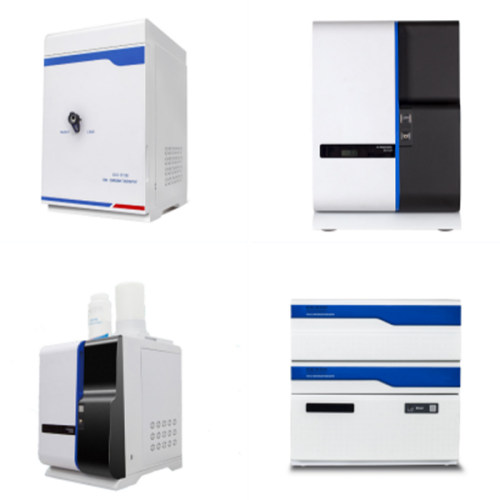What Is Ion chromatography
Ion chromatography is a sort of high-performance liquid chromatography (HPLC), which is a way of analyzing anions and cations using liquid chromatography. Like HPLC, IC takes advantage of ion pairs' inherent affinity for the "eluent" (typically buffered water) and the "stationary phase" (porous solid substrate with charged functional groups).

Ion chromatography is a chromatographic technology in which a conductivity detector is used to continually measure the conductance change of the effluent and an ion exchange resin with low exchange capacity is employed as a fixed relative ionic material to separate. "Principle and Application of Ion Chromatography" defines ion chromatography as a liquid chromatography method that separates and detects the tested item based on its ionicity.
A pump is essentially employed to generate a constant flow of solvent into which the dissolved sample is injected. The analytical column will be passed through after the sample enters the solvent stream. The ions in the sample mixture are separated based on their affinity for the column. After the sample's components have been separated, they are passed through a conductivity detector. The detector response and "retention time" of the target ion (the time it takes for a chemical to move from the injector to the detector) are then compared to the reference material. Organic and inorganic ions.
Applications of Ion Chromatography
Inorganic Anion Detection
Fluorine, chlorine, bromine, and other halogen anions, sulfate, thiosulfate, cyanide, and other anions in aqueous samples are the earliest and most mature ion chromatography detection methods, and can be widely utilized in drinking water. Water quality testing, beer, beverage, and other food safety testing, wastewater discharge compliance testing, metallurgical process water samples, oil industry samples, and quality control of other industrial products are also available. Ion chromatography is frequently utilized in essential process control departments such as halogen-free analysis, especially as the residues of halogen ions in the electronics industry become increasingly restricted.
Detection of inorganic cations
The detection of inorganic cations is similar to the detection of anions, the difference is that a sulfonic acid-based cation exchange column is used, such as Metrosep C1, C2-150, etc. The commonly used eluent system such as the tartaric acid/lutidine system can be Effectively analyzed Li, Na, NH4+, K, Ca, Mg plasma in aqueous samples.
Analyses of Organic Anions and Cations
With the advancement of ion chromatography technology, new analytical equipment and separation methodologies for analyzing certain complexions in biological materials have appeared and steadily developed. Among the most mature applications are:
1) Biogenic amine detection
Metrosep C1 separation column; 2.5mM nitric acid/10% acetone eluent; 3 L injection, which can efficiently analyze putrescine, histamine, and other components and has become an important detection method for criminal investigation systems and forensics.
2) Organic acid detection
Metrosep Organic Acids Separation Column, MSM Suppressor; 0.5 mM H2SO4 as eluent for successful analysis of lactic acid, formic acid, acetic acid, propionic acid, butyric acid, isobutyric acid, valeric acid, isovaleric acid, malic acid, citric acid, and acetic acid It is a simple and efficient separation method used in the microbial fermentation and food industries.
3) Carbohydrate breakdown
Several sugar analysis methods have been developed, including glucose, lactose, xylose, arabinose, sucrose, and others. It is especially common in the food business.
Advantages of Ion Chromatography
quick and convenient
The average analysis time for seven common anions (F-, Cl-, Br-, NO2-, NO3-, SO42-, PO43-) and six common cations (Li+, Na+, NH4+, K+, Mg2+, Ca2+) was less than 8 minutes. With a high-efficiency quick separation column, the 7 most essential common anions can be separated to the baseline in about 3 minutes.
heightened sensitivity
Ion chromatography analysis concentrations range from low g/L (1-10 g/L) to hundreds of mg/L. Direct injection (25L), conductivity detection with a detection limit of less than 10g/L for typical anions.
Analysis of numerous ionic chemicals at the same time
The fundamental advantage of IC over photometric and atomic absorption methods is that it can detect numerous components in the sample at the same time. In a fraction of the time, complete information on anions, cations, and sample composition is provided.
Separation column with large capacity and superior stability
In contrast to silica gel packings used in HPLC, the high pH stability of IC column packings allows the use of strong acids or bases as eluents, which is advantageous for broadening the spectrum of applications.
Ion chromatography is a very good detection method, and its selectivity is higher than that of other chromatographs. As a result, it is an excellent choice for laboratory testing equipment. Please contact us if you require ion chromatography like this to supplement your laboratory. NEON only does the best ion chromatography.
- Art
- Causes
- Crafts
- Dance
- Drinks
- Film
- Fitness
- Food
- Spellen
- Gardening
- Health
- Home
- Literature
- Music
- Networking
- Other
- Party
- Religion
- Shopping
- Sports
- Theater
- Wellness


